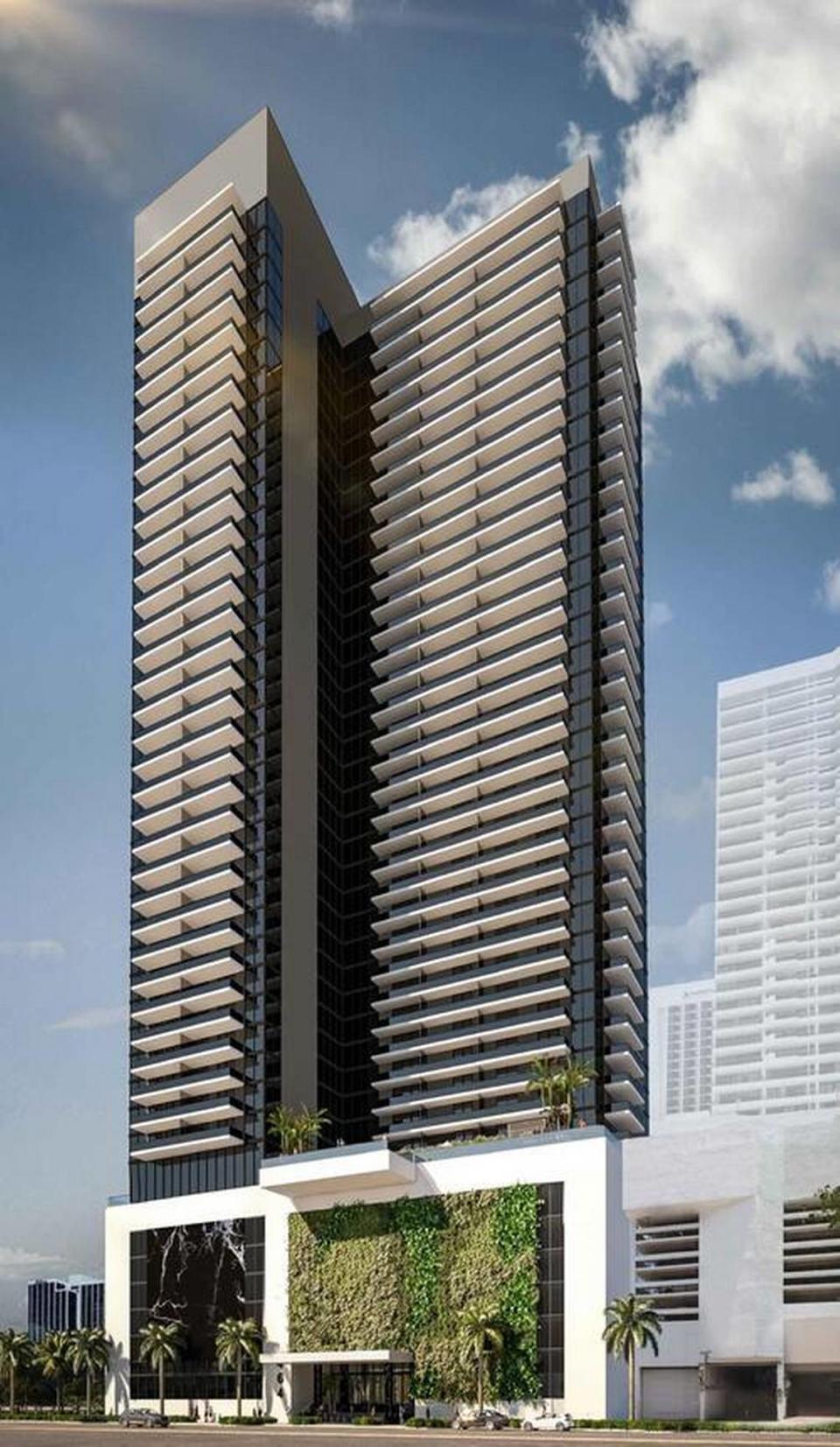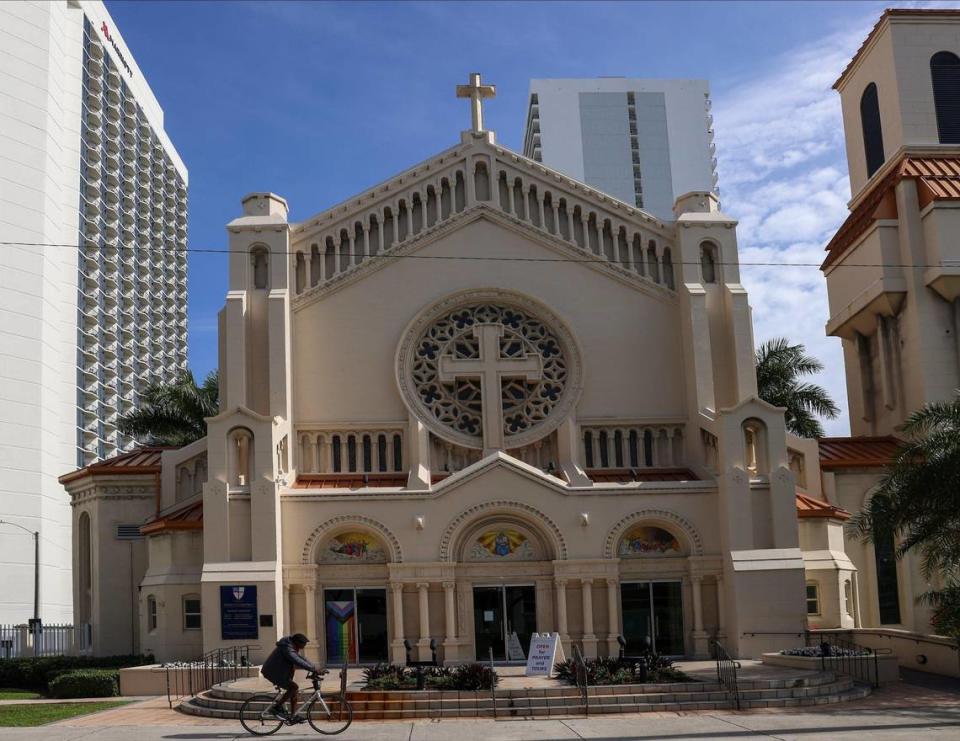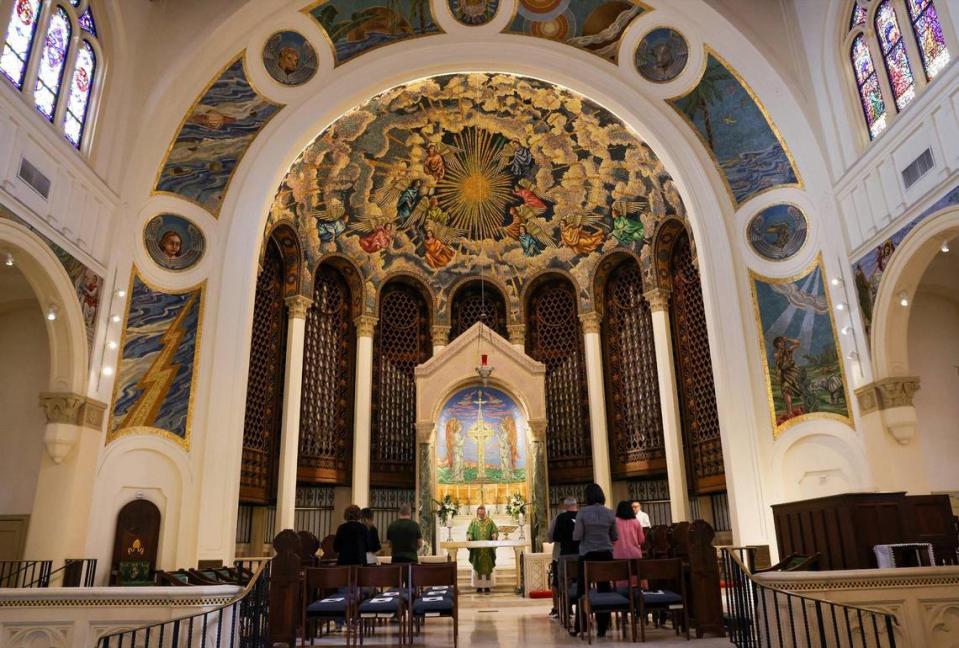One of Miami’s historic churches partners with developer to build $225M high-rise
A historic church in Edgewater signed on to develop a portion of its property into a $225 million high-rise, banking on demand for South Florida housing.
A 42-story apartment rental development is slated to transform the surface parking lot and adjacent vacant lot of Trinity Episcopal Cathedral at 464 NE 16th St., according to Inigo Ardid, co-president of the Brickell-based real estate development firm Key International. Key International, Trinity, and the Diocese of Southeast Florida signed a 99-year lease agreement and have agreed on an L-shaped project covering nearly two acres. The tower will be down the street from the Adrienne Arsht Center for the Performing Arts of Miami-Dade County and the waterfront Genting site and former home of the Miami Herald.
Key International filed plans to Miami-Dade County’s zoning department for a residential development with 462 apartment rentals, ranging from studios to three-bedroom, three-bathroom residences. Asking rents are expected to range from about $2,850 per month up to $6,500 per month. Amenities include a pool, gym, and pickleball court.
The historic cathedral will remain protected, but the church will land a new 4,000-square-foot cathedral hall, event space, outdoor facilities, offices for administrators, and parking garage.
“Our congregation is growing and we want to make best use of our property and space. We are an open community of faith where all are welcome,” said by email the Very Reverend Jason Roberson, Cathedral Provost.

The Reverend said the new 4,000-square-foot space will help them serve their growing congregation, which includes a Spanish-speaking congregation and LGBTQ+ community. Unlike many churches that continue to struggle with dwindling membership since the COVID pandemic, Trinity said their membership is growing along with an increased interest from visitors who are able to stop in Monday through Friday for prayer.
The project will not only enhance the parishioner experience, but also help the church strengthen and build community among their Edgewater neighbors said the Reverend. They plan to do this by offering more community activities in the Cathedral space such as yoga and fitness classes and ramping up their volunteer food pantry service to those experiencing homelessness or food insecurity.
Proceeds from the land lease will go towards the church’s new affordable housing projects throughout Miami-Dade County, said a spokesperson from Trinity. Two affordable housing projects in the Little Havana area are currently in the design phase.
The congregation is yet another religious organization dipping into the South Florida real estate market. In December, the Mormon Church spent $174 million on six warehouses in Hialeah. The nondenominational Christian Reverend T.D. Jakes announced affordable housing developments in Miami Gardens and Hallandale Beach that same month. And, two years ago Brickell’s Miami Presbyterian Church agreed to build a high-rise condominium on its waterfront site with Key International and another partner.

Without interruption or delay, Ardid of Key International said the development should break ground by 2027 and be completed by 2030. At the moment, the next step after zoning would be filing for building permits, which is expected to happen some time this year. The historic cathedral will remain accessible throughout the construction phase.
“The location is fantastic,” Ardid said. “I like that you’ve got prime pieces of land that are undeveloped right by our site. It is very likely that something very high end will be built on those plots of land. I’m confident that this area is going to be something special in the future.”
Church of the Holy Cheesecloth
Trinity Episcopal Church has sat on the same corner in Edgewater for 98 years, but its story goes even further back and connects to one of Miami’s earliest pioneers, said Paul George, resident historian at HistoryMiami. Led by Rev. William C. Gray, church members first started gathering in 1896, but failed to have a permanent home. Then came Julia Tuttle, the woman nicknamed the “Mother of Miami” and credited with enticing Florida East Coast Railway’s Henry Flagler to expand into South Florida. Flagler’s investment would soon turn a place known for its swamps into a young metropolis.
Tuttle became a fan of Gray’s leadership and joined Trinity Episcopal Church, donating land in downtown Miami for the construction of a single story, wood-framed church. It soon became known as the “church of the holy cheesecloth” with attendees opening windows covered with cheesecloth to allow breezes to come in but keep bugs out. Years later, church leaders sold the site and used the money to buy its current home in Edgewater where famed architect Harold Hastings Mundy designed the cathedral. Doors opened in 1925.

Over the decades, Trinity became the go-to place for notable services. Journalist Bill Baggs’ funeral service took place at Trinity, steps from where he worked as an editor for the long-gone newspaper The Miami News once located at the former Miami Herald headquarters on Biscayne Bay. Besides being well-known as an editor, Baggs is credited with saving his namesake Bill Baggs Cape Florida State Park on Key Biscayne from development.
“The church,” George said, “is a prominent place.”
An answer to developers’ prayers?
A recent 40-year recertification inspection with the City of Miami revealed “structural and environmental issues” with some of the church’s buildings, leaving the parish hall and dioceses office buildings unoccupied, according to the church. Trinity reached out to Key International to propose the deal, said Ardid, but his team saw early on the potential to turn this site into a desirable housing community.
“Previously Miami had more options to get prime sites. It has become harder to find them,” Ardid said. “Developers have become more creative in how they purchase these prime sites. One way is through condo collapses and another is through churches. They (churches) are easier than condo collapse.”
Key International has another project in the pipeline on a different historic, church-owned site. The firm and partner 13th Floor Investments plan to construct an 80-story condominium behind the First Miami Presbyterian Church at 609 Brickell Ave., at the heart of Miami’s financial district. It gained approval from the church’s members in 2021. Following a similar timeline as with Trinity, Ardid said construction is expected to launch by 2027.
This story was produced with financial support from Trish and Dan Bell and from donors comprising the South Florida Jewish and Muslim Communities, in partnership with Journalism Funding Partners. The Miami Herald maintains full editorial control of this work.

